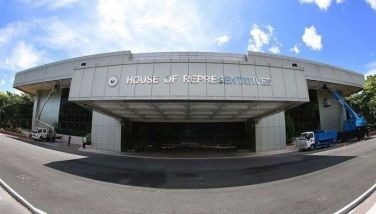Food miles
MANILA, Philippines - In your paper on 12 May, Tyrone Reyes made some good suggestions for Filipinos to consider the environment, and their own personal health, in their everyday lives and purchasing decisions. That’s a laudable aim.
But unfortunately Dr. Reyes bought into the very simplistic “food miles” argument. This is the idea that you can measure how environmentally damaging food is simply by the distance it has to travel to market.
He even went as far as saying that “flying kiwis in from New Zealand … is an energy-intensive way to fulfil the fruit-and-vegetable imperative”. That might be right. But in fact no New Zealand exporter flies kiwifruit (as they are known in New Zealand) to the Philippines. Instead, kiwifruit are sent to the Philippines on ships, resulting in much lower energy use and greenhouse gas emissions than air travel. So let’s not demonize New Zealand kiwifruit by using misleading facts.
And even apart from the fact that kiwifruit are shipped, not flown, from New Zealand to the Philippines, the whole food miles argument needs a closer look. That argument is, quite frankly, full of holes.
The distance that food has to travel to its market (or “food miles”) is, by itself, not a good indicator of that product’s environmental sustainability. What really matters is the total energy used, and the emissions produced, across a product’s entire life cycle. This means considering the emissions from each phase of the production process, and not just the transport component.
Often imported food can even have a lower environmental burden than food that is locally produced. For example, studies conducted both in New Zealand and the United Kingdom have consistently shown that New Zealand lamb products on British supermarket shelves have a lower environmental burden than lamb that is produced and sold in Britain, even after transport. This can be explained by the natural climactic advantages enjoyed by New Zealand farming, as well as differences in farming and processing methods.
To bring the argument closer to home, it would be technically possible for distant countries to produce their own bananas, in order to minimize so-called “food miles”, rather than importing them from places like, for example, the Philippines. But imagine the energy consumed and emissions produced by producing bananas in greenhouses in frosty European climes. Nobody could argue that this would be better for our planet.
New Zealand is taking very seriously both the facts and perceptions around greenhouse gas emissions associated with food. Partnerships between industry, science, and government are in place to develop greenhouse gas footprinting methodologies that look at the whole life cycle of products in our major primary export sectors. Specific studies already cover the forestry, lamb, onions, wine, berryfruit, dairy, and kiwifruit sectors.
Zespri, the company that exports kiwifruit from New Zealand to the Philippines, last month announced the findings of its study to measure the carbon footprint across the life cycle of New Zealand kiwifruit, from the orchard right through to consumption and disposal. This gives Zespri a comprehensive understanding of emissions at each stage of the life cycle, so that it can focus efforts to reduce these. These include efforts to innovate and promote best practice in orchards and packhouses, as well as in transportation.
Climate change is a very real and very complex global issue that impacts on all of us. It is important for our planet that consumers consider the emissions profiles of the products they buy, but it is equally important that they consider emissions in a scientific way over the whole life cycle of the product, rather than only those emissions from the transport phase of production. New Zealand food producers are actively engaged in getting this science — and hence initiatives to reduce emissions — right.
- Latest




















